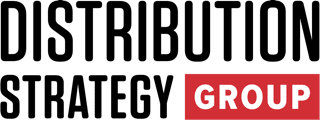Some distributors will win and others will lose from the many provisions in the 870-page One Big Beautiful Bill Act signed into law July 4 by President Donald Trump.
Among those likely to be winners is ARG Industrial, which will benefit from expanded oil and gas development in Alaska, which accounts for 60% of the industrial distributor’s revenue. “We’re planning for some good growth over the next five years,” says president and CEO Mike Mortensen. “Natural resource development is what Alaska is all about.”

The impact will be more mixed for MC Tool & Safety Sales, a Minnesota-based distributor of construction tools and safety equipment, says president Erika Scherman. While construction incentives will help, the phaseout of tax breaks for solar and wind projects will hurt the company’s business, she says.
Plus, the very complexity of the massive bill, on top of constantly changing tariffs, makes it hard for a small company like hers to respond, Scherman says.
“There are some tax savings, but, overall, there are too many things in the bill,” Scherman says. “Everything gets convoluted and it’s hard to see what’s going to happen until it all gets sorted out.” She expects big businesses will benefit more than small ones. “They have the money and resources to take advantage of all of it,” she says.

And then there is the ever-changing tariff policy, which Scherman calls “just brutal.” “The fact they change so often, and we don’t have the resources to man all the pricing stuff, its just killing us,” she says. “Whatever game they’re playing on the tariff side is really tough on small business.”
The views of these distributors are broadly in line with what economic analysts say: The bill will provide a strong stimulus for certain sectors, while negatively impacting others. And, while the bill creates near-term certainty around taxes for businesses, the uncertainty around tariffs remains a headwind and inflationary pressures are building.
Key provisions of the One Big Beautiful Bill Act
The tax-and-spending bill “is big. Really BIG,” says a summary of the bill’s provision by economist Michelle Kocses of research and consulting firm ITR Economics. “The recently signed One Big Beautiful Bill Act (OBBBA) goes beyond tax policy and changes incentives for agriculture, defense, education, energy, health care, immigration and transportation,” Kocses writes.
ITR has made available to DistributionStrategy.com readers an executive summary of the bill’s impact, which can be accessed here. A quick snapshot of sectors that will win and lose, based on ITR’s analysis, reveals the following:
- Winners: Oil and gas, mining, electric grid (except renewables), defense, aerospace, border security and law enforcement, agriculture and forestry, R&D [research and development] services, auto, construction.
- Losers: Renewables (including wind, solar and electric vehicles), healthcare and education.
In addition, the bill contains business tax breaks that will have a big impact, especially in encouraging construction and benefiting smaller businesses.
Among the key provisions, the act reinstates the 100% first-year depreciation for research and development and certain other investments, rather than requiring depreciation over time. A separate provision increases the maximum amount that can be immediately deducted for tax purposes to $2.5 million from $1 million, a significant boost for small companies.
In addition, there is a new 100% deduction for purchases of certain equipment used in manufacturing, production and refining. “This provision provides a powerful incentive for companies to invest in new production facilities,” says an analysis by accounting firm Grassi on the law’s impact on the construction industry.
For ARG Industrial, an S-Corp that passes profits directly to its employee owners for tax purposes, the extension of tax cuts in the 2017 Tax Cuts and Jobs Act is important, as is the elimination of income tax on some overtime pay, Mortensen says.
“The tax breaks are going to help employees quite a bit,” he says. “The 2017 tax cuts were good for employees’ families. And we have a lot of hourly employees, putting in lots of overtime, so not having overtime taxed will be super beneficial.”
Who benefits the most from accelerated depreciation
The tax breaks for individuals and companies were highlighted by the National Association of Wholesalers in a statement that called the tax-and-spending bill “a major victory for America’s businesses and workers.” In its statement, the trade group said the accelerated depreciation provisions will enable “businesses to invest confidently in the equipment and infrastructure needed to grow.”
However, distributors, which buy goods from manufacturers and thus typically don’t spend a great deal on product development, likely will benefit less from those depreciation provisions than other industries that spend more on R&D and other capital expenditures.

A Census Bureau analysis of capital expenditures by U.S. industries showed companies categorized as Wholesale Trade, including wholesalers and distributors, spent only $36.0 billion on capex in 2020 compared to $258.0 billion for manufacturers and $169.7 billion for companies in the information sector.
The accelerated distribution will be especially important for manufacturers, says Alex Chausovsky, director of analytics and consulting for Bundy Group, an investment bank. “There is pent-up demand from some people holding off because of the uncertainty around the tax environment and the write-offs for R&D,” he says, adding that manufacturers “tend to benefit quite a bit” from those tax breaks.
Within distribution, Chausovsky says, distributors of industrial products likely will benefit the most as they tend to have higher profit margins and thus more money to invest than companies in consumer products. “Distributors where margins are higher tend to be more geared to investment,” he says.
Bill’s provisions impact planning now
Among the likely losers from the One Big Beautiful Bill Act are companies in the solar and wind energy industries. The bill ends subsidies later this year for those clean energy projects provided under the administration of President Joe Biden.
Ending those subsidies could reduce clean energy investment by $500 billion over the next decade, according to Princeton University’s REPEAT [Rapid Energy Policy Evaluation & Analysis Toolkit] Project. A separate analysis by Rhodium Group projects the bill could cut new clean power capacity by 57% to 72% by 2035 and put about $522 billion in planned clean energy investments at risk.
Those cutbacks in solar and wind projects will “absolutely” impact MC Tool & Safety Sales, Scherman says.
Hospitals, other healthcare providers and distributors that serve those organizations appear certain to be hurt by the $1 trillion in cuts to Medicaid, which the Congressional Budget Office estimates will reduce the number of people receiving benefits by nearly 12 million by 2034. About 70 million mostly lower-income individuals currently receive Medicaid benefits.

Partly offsetting those revenue losses, the bill includes a $50 billion fund to aid rural hospitals, which many believe will be especially hard hit from the loss of Medicaid revenue. Some Medicaid rules changes won’t take effect until 2027, including stiffer eligibility requirements for recipients, but others that impact hospital finances will kick in earlier.
Healthcare industry distributors already are making adjustments, says Chris Blaylock, a partner at tax and advisory firm Wipfli. “Although Medicaid cuts are delayed, the anticipation of reduced reimbursement is already prompting distributors tied to healthcare to freeze hiring, delay capital investments and revisit pricing models,” Blaylock says.
Distributors serving higher education should also expect lower spending by colleges and universities, says Lauren Saidel-Baker, an economist at ITR Economics. She says colleges were already struggling with lower enrollment due to a decreasing number of college-age U.S. residents and more students choosing trade schools to avoid student debt. Provisions in the tax-and-spending bill that cap student loans “add insult to injury,” she says.
Uncertainty and pricing pressures
Both Blaylock and Saidel-Baker see businesses spending cautiously as they navigate changes from this bill, tariff policies and broader economic trends.
“Overall, strategic implications for distributors in the short-term are an expected cautious hiring and capital investment,” Blaylock says. “Mid-term you may see greater diversification in product lines or pursuit of M&A to consolidate market share, and the long-term investment in digital infrastructure to better position themselves when margin pressures get more serious.”

Saidel-Baker also sees uncertain conditions restraining business spending at a time when a strong labor market continues to support consumer spending. She advises distributors to expect to pay higher prices in the coming period as a result of increased economic activity that was already showing up before this bill passed, compounded by the higher federal government deficits built into the One Big Beautiful Bill Act that likely will keep the Federal Reserve from significantly reducing interest rates.
And that means planning to recoup those higher costs with higher prices of their own. “Businesses need to plan for higher pricing,” Saidel-Baker says. “Whatever price escalators you can have in place, that will be more of an ongoing conversation with customers.”
Scherman, the president of MC Safety & Tools Sales and a board member of the Specialty Tools & Fasteners Distribution Association, says she and other STAFDA members are “optimistic but cautious.”
For her part, she’s following a familiar playbook. “We’re trying keep spending in check and making sure our finances are in good order, while doing the right thing to build the company,” Scherman says. “It’s every small business owner’s dilemma.”
The One Big Beautiful Bill Act doesn’t change that. It does shuffle the deck among winners and losers and could contribute to inflationary pressures if it does in fact increase the federal deficit. Add in uncertainty about where tariffs will land, and it’s little wonder the word “caution” shows up often in discussions about the outlook for distributors and the economy as a whole.
Don Davis, former editor-in-chief of Internet Retailer magazine and Vertical Web Media, is a freelance writer based in Chicago. His experience in retail and distribution goes back to his childhood when he worked in the toy wholesale business founded by his father and two uncles and in their discount department stores located throughout the New York metropolitan area.

